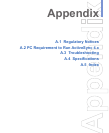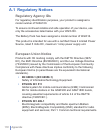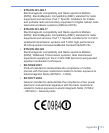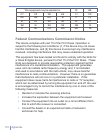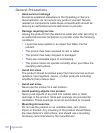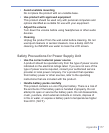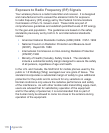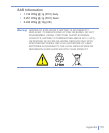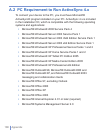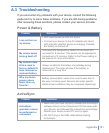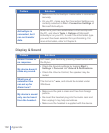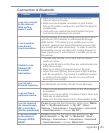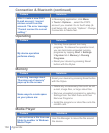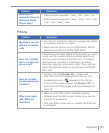
178 | Appendix
Exposure to Radio Frequency (RF) Signals
Your wireless phone is a radio transmitter and receiver. It is designed
and manufactured not to exceed the emission limits for exposure
to radio frequency (RF) energy set by the Federal Communications
Commission of the U.S. Govern-ment. These limits are part of
comprehensive guidelines and establish permitted levels of RF energy
for the gen-eral population. The guidelines are based on the safety
standards previously set by both U.S. and international standards
bodies:
• American National Standards Institute (ANSI) IEEE. C95.1-1992
• National Council on Radiation Protection and Measure-ment
(NCRP). Report 86. 1986
• International Commission on Non-Ionizing Radiation Protection
(ICNIRP) 1996
• Ministry of Health (Canada), Safety Code 6. The standards
include a substantial safety margin designed to assure the safety
of all persons, regardless of age and health.
In the U.S. and Canada, the SAR limit for mobile phones used by the
public is 1.6 Watts/kg (W/kg) averaged over one gram of tissue. The
standard incorporates a substantial margin of safety to give additional
protection for the public and to account for any variations in usage.
Normal condi-tions only ensure the radiative performance and safety
of the interference. As with other mobile radio transmitting equip-ment,
users are advised that for satisfactory operation of the equipment
and for the safety of personnel, it is recommended that no part of
the human body be allowed to come too close to the antenna during
operation of the equipment.




